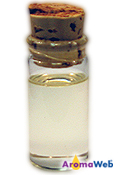Saro Essential Oil
Cinnamosma fragrans

Description
Saro Essential Oil is also known as Mandravasarotra Essential Oil.
Saro Essential Oil is a lesser known, but affordable essential oil. It contains approximately 40-50% oxides (primarily in the form of 1,8 cineole), 20-35% monoterpenes and 10-20% monoterpenols. It is a very useful oil to work with for coughs, colds, headaches, respiratory complaints and to ease muscular aches and pains.
Emotionally, Saro Essential Oil is uplifting and stimulating. It may be helpful in blends intended to assist with depression and anxiety.
Saro Essential Oil Benefits and Uses
- Respiratory Support
- Soothing Allergies
- Mucus
- Congestion
- Sore Throats
- Coughs
- Bronchitis
- Coughs
- Colds
- Influenza
- Sinusitis
- Inflammation
- Natural Cleaning Blends
- Relaxation
- Catarrh
- Muscular Pain
- Muscular Injury
- Cellulite
- Wounds
- Abscesses
- Physical Exhaustion
Sources: Andrea Butje, The Heart of Aromatherapy (Carlsbad, CA: Hay House, Inc., 2017), 110. Valerie Ann Worwood, The Complete Book of Essential Oils and Aromatherapy, 25th Anniversary Edition (Novato, CA: New World Library, 2016, 621.
Botanical Name
Plant Family
Common Method of Extraction
Steam Distilled
Plant Part Typically Used
Color
Clear to Pale Yellow
Consistency
Thin
Perfumery Note
Top
Strength of Initial Aroma
Medium - Strong
Aromatic Description
Saro Essential Oil smells camphorous and is with a slight lemony/fruity note.
Sustainability and Conservation Status
Least Concern
Source: https://www.iucnredlist.org/species/128085823/128090662
To learn more about the conservation status of essential oil bearing plants and how to use the IUCN Red List of Threatened Species, please refer to AromaWeb's Guide to Essential Oils and Sustainability.
Major Constituents
- 1,8 Cineole
- B-Pinene
- a-Pinene
- Terpinen-4-ol
- (+)-Limonene
- a-Terpineol
- Terpinyl Acetate
- Linalool
Source: Private Communication: Behra, 2003. Source cited in Robert Tisserand and Rodney Young, Essential Oil Safety (Second Edition. United Kingdom: Churchill Livingstone Elsevier, 2014), 421.
Saro Essential Oil Safety Information
Tisserand and Young indicate that due to its 1,8 cineole content, Saro Essential Oil may cause CNS and breathing problems in young children. They caution against using Saro Oil on or near the face of infants and children. Reading Tisserand and Young's full profile is recommended. [Robert Tisserand and Rodney Young, Essential Oil Safety (Second Edition. United Kingdom: Churchill Livingstone Elsevier, 2014), 421.]
General Safety Information
Do not take any oils internally and do not apply undiluted essential oils, absolutes, CO2s or other concentrated essences onto the skin without advanced essential oil knowledge or consultation from a qualified aromatherapy practitioner. For general dilution information, read AromaWeb's Guide to Diluting Essential Oils. If you are pregnant, epileptic, have liver damage, have cancer, or have any other medical problem, use oils only under the proper guidance of a qualified aromatherapy practitioner. Use extreme caution when using oils with children and be sure to first read the recommended dilution ratios for children. Consult a qualified aromatherapy practitioner before using oils with children, the elderly, if you have medical issues or are taking medications. Before using this or any essential oil, carefully read AromaWeb's Essential Oil Safety Information page. For in-depth information on oil safety issues, read Essential Oil Safety by Robert Tisserand and Rodney Young.
Shelf Life
Important Information About the Profiles
The essential oil information provided on AromaWeb is intended for basic educational purposes only. The references to safety information, test results, constituents and percentages is generalized information. Essential oils can vary greatly in composition. The data is not necessary complete and is not guaranteed to be accurate. The essential oil photos are intended to represent the typical and approximate color of each essential oil. However, essential oil composition and color can vary based on harvesting, distillation, age of the essential oil and other factors. Profiles for several CO2 Extracts and absolutes are included within the directory, and are denoted as such.
